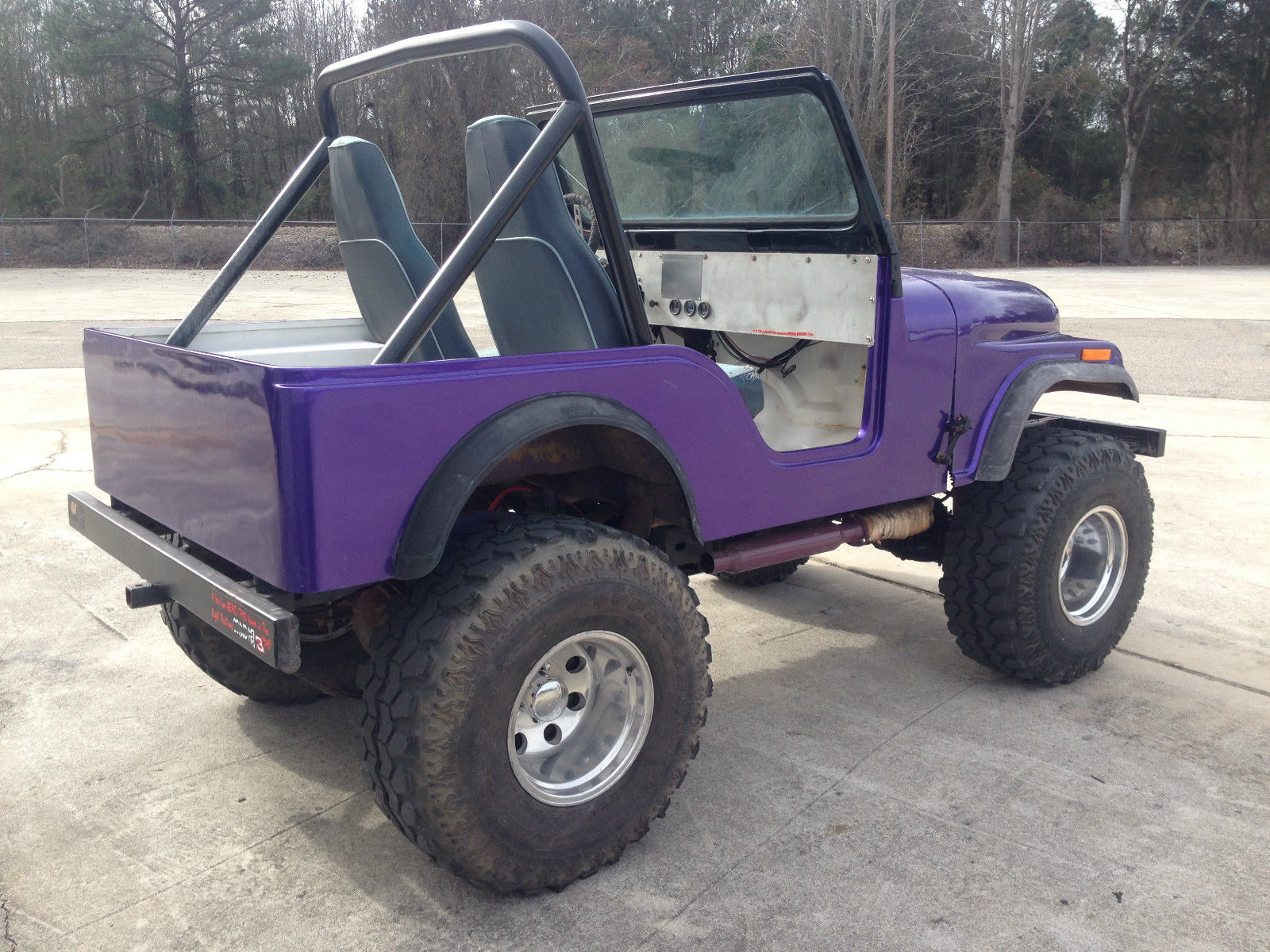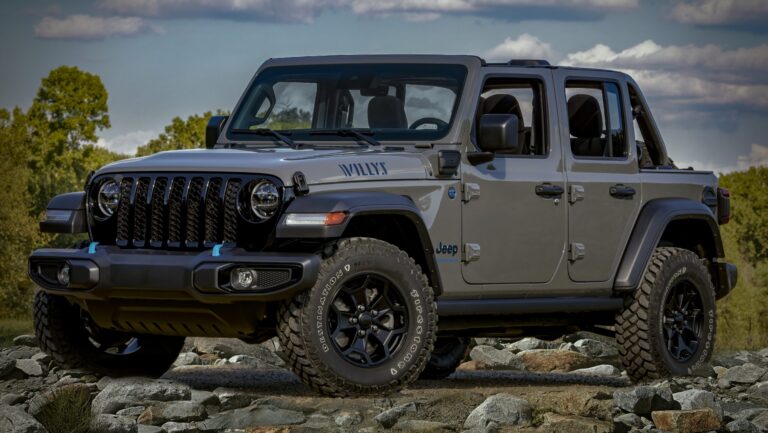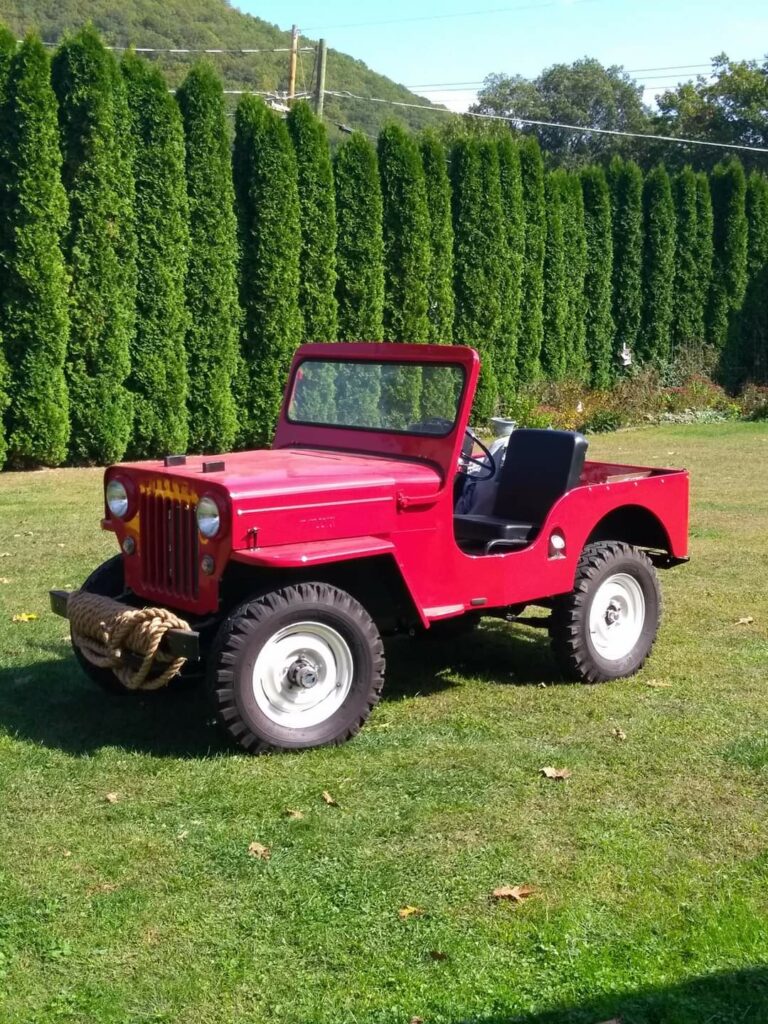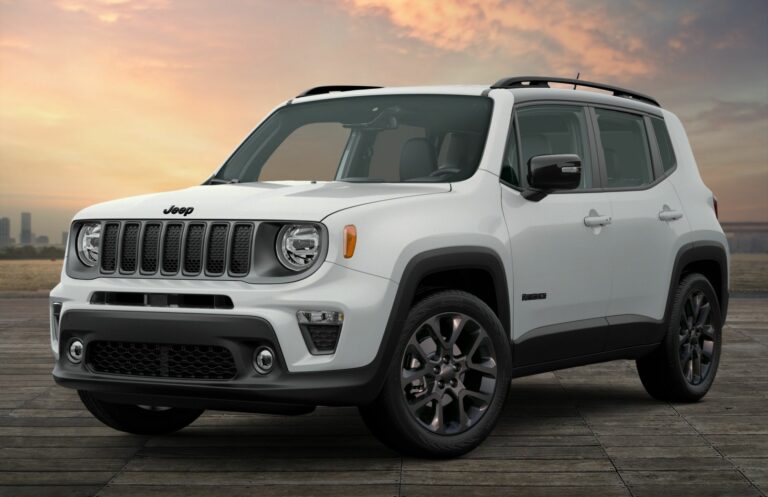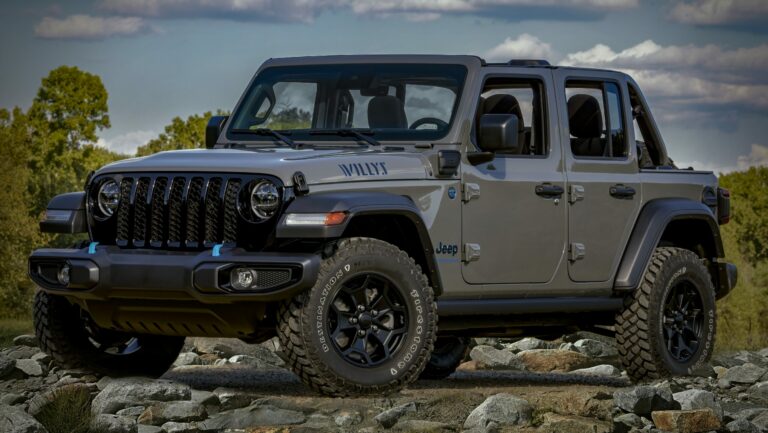Fiberglass Jeep Body For Sale: Your Ultimate Guide to a Rust-Free Revival
Fiberglass Jeep Body For Sale: Your Ultimate Guide to a Rust-Free Revival jeeps.truckstrend.com
The iconic Jeep, a symbol of freedom, adventure, and rugged capability, often battles one persistent enemy: rust. Years of exposure to harsh elements, road salt, and challenging off-road conditions can leave a steel Jeep body looking more like a sieve than a solid structure. For many Jeep enthusiasts, replacing a rusted-out tub or damaged panels with new steel can be a daunting, expensive, and often short-lived solution. This is where the fiberglass Jeep body for sale emerges as a revolutionary, durable, and increasingly popular alternative.
A fiberglass Jeep body is essentially a meticulously molded replica of the original steel body, constructed from layers of woven fiberglass fabric impregnated with resin. These bodies offer a compelling solution for restoration projects, custom builds, or simply replacing a severely corroded original. They provide a rust-proof foundation, often lighter than their steel counterparts, and open up a world of possibilities for revitalizing your beloved off-roader. This comprehensive guide will delve into everything you need to know about fiberglass Jeep bodies, from their undeniable benefits to the critical considerations before you buy, and practical advice for a successful project.
Fiberglass Jeep Body For Sale: Your Ultimate Guide to a Rust-Free Revival
Why Choose Fiberglass for Your Jeep? The Unbeatable Advantages
Opting for a fiberglass body over traditional steel offers a myriad of benefits that appeal to both serious restorers and casual enthusiasts alike:
- Unrivaled Corrosion Resistance: This is, without a doubt, the primary advantage. Fiberglass does not rust, corrode, or rot, ever. This means your investment will stand the test of time, enduring harsh weather and salty environments without the creeping decay that plagues steel bodies. Say goodbye to rust repair patches and endless sanding!
- Significant Weight Reduction: Fiberglass is inherently lighter than steel. While the exact weight savings vary by model and manufacturer, a fiberglass tub can shed hundreds of pounds from your Jeep’s overall weight. This translates to improved fuel economy, better power-to-weight ratio, enhanced acceleration, and potentially better suspension performance, especially for off-roading.
- Exceptional Durability and Flexibility: Unlike steel, which can dent, crease, or rust through after impact, fiberglass exhibits a degree of flexibility. This allows it to absorb impacts better, often deflecting minor blows without permanent damage. In the event of a significant impact, fiberglass tends to crack rather than crumple, and repairs are often simpler and more localized than welding steel.
- Ease of Repair: Should your fiberglass body sustain damage, repairs are generally straightforward and can often be performed by a competent DIYer using readily available fiberglass repair kits. Unlike steel, which requires welding and specialized bodywork tools, fiberglass can be patched, sanded, and painted with relative ease.
- Cost-Effectiveness in the Long Run: While the initial purchase price of a fiberglass tub might seem comparable to or even slightly higher than some steel options, the long-term savings are substantial. You eliminate the need for costly rust repairs, extensive bodywork, and the constant battle against corrosion, making fiberglass a smart, durable investment.
- Consistent Quality and Fitment: Reputable manufacturers use precision molds to produce fiberglass bodies, ensuring consistent dimensions and fitment. This can often lead to a smoother installation process compared to trying to align warped or heavily patched steel panels.
- Customization Potential: Fiberglass is highly moldable, making it an excellent medium for custom modifications. Whether you’re extending a tub, adding custom flares, or integrating unique features, fiberglass offers flexibility for personalized builds.

Types of Fiberglass Jeep Bodies and Components Available
The market for fiberglass Jeep bodies is diverse, catering to various models and project needs. Understanding the different types available is crucial for making an informed decision:
- Full Body Tubs: These are complete, one-piece or multi-piece replicas of the original Jeep tub (the main passenger compartment). They are available for a wide range of vintage and modern Jeeps, most commonly:
- CJ Series (CJ-2A, CJ-3A, CJ-5, CJ-7, CJ-8 Scrambler): These are perhaps the most popular recipients of fiberglass tubs due to their age and propensity for severe rust.
- YJ Wrangler: The square-headlight era Jeeps also frequently benefit from fiberglass replacements.
- TJ Wrangler: While newer, TJs can still suffer from rust, making fiberglass an option.
- JK/JL Wrangler: Less common, but custom fiberglass hardtops or specialized panels might be available for newer models.

- Individual Replacement Panels: If only specific parts of your Jeep are rusted or damaged, you can often find fiberglass replacements for:
- Fenders (Front and Rear): Both flat-fender and flared styles are available.
- Hoods: Often lighter and less prone to denting than steel.
- Grilles: A common rust point, especially on older models.
- Tailgates: Another area prone to rust and damage.
- Dash Panels/Interior Components: While less common for full body replacement, some interior pieces might be available.
- Complete Kits vs. Individual Components: Some manufacturers offer comprehensive kits that include the main tub, tailgate, inner fenders, and sometimes even the dash, providing a near-complete body solution. Others sell components individually, allowing you to replace only what’s necessary.
- Manufacturers and Brands: Several reputable companies specialize in fiberglass Jeep bodies and components. While specific brand recommendations are beyond the scope, researching well-known names in the Jeep aftermarket community is advisable. Look for companies with a long track record, positive reviews, and a focus on quality.
Key Considerations Before Buying Your Fiberglass Jeep Body
Purchasing a fiberglass Jeep body is a significant investment. Careful planning and consideration of several factors will ensure a successful project:
- Vehicle Compatibility: This is paramount. Ensure the fiberglass body or components are specifically designed for your Jeep’s make, model, and year. A CJ-7 tub will not fit a YJ, and vice-versa, without significant modification.
- Quality and Construction: Not all fiberglass is created equal. Inquire about the manufacturing process:
- Gel Coat: A good quality gel coat provides a smooth, durable, and UV-resistant outer layer.
- Fiberglass Layup: Look for multiple layers of woven matting and roving for strength and rigidity.
- Reinforcement: Check for reinforced areas at stress points, like body mount locations and door hinges.
- Fitment: While perfect "bolt-on" might be an exaggeration for any body replacement, reputable manufacturers strive for excellent fitment, minimizing the need for extensive shimming or modification during installation.
- Completeness of the Kit: Understand exactly what is included in the purchase. Does the tub come with inner fenders, a dashboard, or a tailgate? Are mounting hardware, seat mounts, or windshield frame attachment points pre-drilled or molded in? Missing components can add significant cost and complexity later.
- Installation Complexity and Skills Required: Replacing a Jeep body is a major undertaking. While a fiberglass body eliminates welding, it still requires significant mechanical aptitude. You’ll need to transfer countless components from your old body to the new one, including wiring harnesses, brake lines, fuel lines, steering columns, and dashboard components. Consider whether you have the tools, space, time, and expertise for a DIY installation, or if professional assistance will be needed.
- Budget Beyond the Body: The price of the fiberglass body itself is only one part of the equation. Factor in:
- Shipping Costs: Fiberglass bodies are large and bulky, making shipping expensive.
- Paint and Bodywork: Most fiberglass bodies come with a basic gel coat and will require sanding, primer, and paint for a finished look.
- New Hardware/Components: You may need new body mounts, bolts, or seals.
- Labor Costs: If you’re hiring a professional for installation or painting.
- Miscellaneous Parts: Small clips, fasteners, grommets, etc., can add up.
- Legalities (VIN Transfer): For full body replacements, especially on older Jeeps, transferring the Vehicle Identification Number (VIN) from the old body to the new one is a critical legal step. Research your local Department of Motor Vehicles (DMV) regulations regarding VIN transfer and body replacement to ensure your Jeep remains road legal and properly titled. Many fiberglass tubs come with a designated area for VIN stamping.
- Warranty and Support: Choose a manufacturer that offers a warranty on their product and provides good customer support. This can be invaluable if you encounter issues during installation or with the product itself.
The Buying Process: Where to Find Fiberglass Jeep Bodies
Fiberglass Jeep bodies are available through several channels:
- Specialized Online Retailers: Many aftermarket Jeep parts websites carry a selection of fiberglass bodies and components. These sites often provide detailed descriptions, images, and customer reviews.
- Direct from Manufacturers: Purchasing directly from the manufacturer can sometimes offer competitive pricing and direct access to their expertise and support.
- Aftermarket Parts Expos and Trade Shows: Attending Jeep-specific events can allow you to see products firsthand, speak with representatives, and sometimes find show specials.
- Used Marketplaces (Caution Advised): Websites like eBay or Craigslist may list used fiberglass bodies. While potentially cheaper, inspect them thoroughly for damage, repairs, or warping before committing. "As-is" sales carry inherent risks.
- Local Custom Shops/Fabricators: Some local shops might stock or be able to order fiberglass bodies, and may also offer installation services.
Installation Guide: From Chassis to Trail (Brief Overview)
Installing a fiberglass Jeep body is a significant project but can be very rewarding. Here’s a simplified overview of the typical steps:
- Preparation:
- Thoroughly document your old body’s wiring, component placement, and routing. Take many photos!
- Disconnect and remove all components from the old body (dash, seats, wiring, fuel lines, brake lines, steering column, etc.).
- Carefully remove the old body from the frame.
- Inspect, clean, and repair your Jeep’s chassis/frame as needed. This is the perfect time for frame repair, painting, or suspension upgrades.
- Mounting the New Body:
- Carefully lower the fiberglass tub onto the frame.
- Align the body mounts and secure it using new body mount bushings and hardware. Shimming may be required to achieve proper alignment.
- Transferring Components: This is the most time-consuming step.
- Reinstall the dashboard, steering column, and pedals.
- Route the wiring harness, ensuring all connections are secure and properly grounded.
- Install fuel lines, brake lines, and any other plumbing.
- Mount seats, roll bar, and other interior components.
- Finishing Touches:
- Install fenders, hood, grille, and tailgate.
- Perform any necessary bodywork (sanding, filling minor imperfections).
- Prime and paint the new fiberglass body.
- Reinstall lights, mirrors, and trim.
- Perform a thorough inspection and test drive.
Tips for Installation:
- Patience is Key: Do not rush the process.
- Organization: Label every wire, bolt, and component as you remove it. Use baggies and notes.
- Consult Manuals: Refer to your Jeep’s factory service manual and any instructions provided with the fiberglass body.
- Professional Help: Consider professional assistance for critical systems like brakes, fuel, or complex wiring if you’re not confident in your abilities.
Maintenance and Care for Your Fiberglass Jeep Body
While fiberglass is incredibly durable, a little care goes a long way in preserving its appearance and longevity:
- Regular Cleaning: Wash your fiberglass body with mild automotive soap and water. Avoid harsh abrasive cleaners or solvents that could damage the gel coat or paint.
- UV Protection: Fiberglass, like any material exposed to the sun, can degrade over time due to UV radiation. Regularly wax or apply a UV protectant specifically designed for gel coats or automotive paint to protect the finish and prevent fading or chalking.
- Repair Minor Damage Promptly: Small chips or scratches in the gel coat can be repaired using readily available fiberglass or gel coat repair kits. Addressing these promptly prevents water ingress and larger issues.
- Inspect Body Mounts: Periodically check the body mounts for tightness and wear. Proper mounting ensures the body is supported correctly and prevents stress cracks.
Practical Advice for Your Fiberglass Jeep Body Project
- Do Your Homework: Research different manufacturers, read reviews, and seek advice from other Jeep owners who have undertaken similar projects.
- Prioritize Quality: While budget is a factor, compromising on the quality of the fiberglass body can lead to poor fitment, more difficult installation, and a less durable end product.
- Factor in ALL Costs: Be realistic about the total expense, including shipping, paint, hardware, and potential professional labor.
- Don’t Rush the Process: Take your time with disassembly, frame preparation, and reassembly. A meticulous approach will yield the best results.
- Join the Community: Online Jeep forums and local clubs are invaluable resources for advice, tips, and troubleshooting.
Conclusion: A Rust-Proof Future for Your Jeep
A fiberglass Jeep body for sale represents more than just a replacement part; it’s an investment in the longevity, performance, and aesthetic appeal of your cherished off-roader. By eliminating the perpetual threat of rust and often reducing overall weight, fiberglass offers a compelling solution for breathing new life into vintage Jeeps or enhancing newer models. While the installation demands dedication and careful planning, the end result is a durable, lighter, and virtually maintenance-free body that will stand up to the elements for decades to come. Embrace the future of Jeep restoration and hit the trails with confidence, knowing your ride is built to last.
Typical Price Range for Fiberglass Jeep Body Components (Estimated)
Please note: Prices are highly variable based on manufacturer, quality, specific model, and current market conditions. These are general estimates for new, unpainted components.
| Item | Typical Price Range (USD) | Notes |
|---|---|---|
| Full CJ-7 Tub | $3,000 – $6,500+ | Complete body tub, often includes tailgate. May require separate dash, inner fenders. |
| Full CJ-5/CJ-8 Tub | $3,500 – $7,000+ | Longer or shorter tubs often command a slight premium due to lower production volume. |
| Full YJ Wrangler Tub | $3,000 – $6,000+ | Complete body tub, often includes tailgate. Similar to CJ-7 pricing. |
| Front Fenders (Pair) | $350 – $700 | Available for various models (CJ, YJ, TJ), flat or flared. |
| Hood | $300 – $600 | Lighter than steel, less prone to denting. |
| Grille | $150 – $350 | Often purchased with hood or fenders, common rust point. |
| Tailgate | $200 – $450 | Standalone replacement for rusted or damaged steel tailgates. |
| Dashboard | $200 – $400 | Interior component, may be included with some full tub kits. |
| Body Mount Bushing Kit | $100 – $300 | Essential for proper installation, typically not included with body. |
| Shipping Costs | $300 – $1,000+ | Highly dependent on distance and body size. Often a significant added cost. |
| Professional Paint Job | $1,500 – $5,000+ | Varies significantly based on color, finish quality, and shop rates. |
| Professional Installation | $1,000 – $4,000+ | Depends on complexity, shop rates, and condition of your frame/transferable parts. |
Frequently Asked Questions (FAQ) about Fiberglass Jeep Bodies
Q1: Is fiberglass as strong as steel?
A1: Fiberglass has different properties than steel. While steel is known for its rigidity and ability to crumple in a controlled manner during severe impact, fiberglass is more flexible and absorbs impact differently, often cracking rather than deforming. For general off-road use and everyday driving, a well-constructed fiberglass body is incredibly durable and more resistant to impact damage than rusted steel. It excels in corrosion resistance, which is steel’s major weakness.
Q2: Can I paint a fiberglass body myself?
A2: Yes, with proper preparation, you can paint a fiberglass body yourself. The process involves sanding the gel coat, applying a high-quality primer designed for fiberglass, and then applying automotive paint. Achieving a professional-looking finish, however, requires skill, proper equipment, and a dust-free environment. Many opt for professional painting services for the best aesthetic outcome.
Q3: How much lighter is a fiberglass body compared to steel?
A3: The weight savings can be significant, often ranging from 100 to 300 pounds or more, depending on the specific Jeep model and the extent of the fiberglass replacement. For example, a complete fiberglass CJ-7 tub might weigh around 200-250 lbs, whereas a steel tub can weigh 400-500 lbs.
Q4: Do I need special tools for installation?
A4: While you won’t need welding equipment, installing a fiberglass body still requires a good set of general automotive tools (wrenches, sockets, screwdrivers), a jack and jack stands, and potentially an engine hoist or several strong friends to lift the body. Power tools for drilling, grinding, and sanding are also helpful. A well-organized workspace is crucial.
Q5: Will a fiberglass body ever rust?
A5: No, fiberglass itself is impervious to rust and corrosion. This is one of its most significant advantages over steel. The fasteners and internal steel components (like door hinges or windshield frame) that attach to the fiberglass can still rust, so it’s important to use stainless steel hardware where possible and maintain those ancillary parts.
Q6: What about the VIN number? How do I transfer it?
A6: Most fiberglass tubs will have a designated flat area or a molded recess where you can legally stamp or affix your original Jeep’s VIN plate. The exact process for VIN transfer varies by state/country, so it is critical to contact your local Department of Motor Vehicles (DMV) or equivalent agency before beginning the project to understand their specific requirements and procedures to ensure your vehicle remains legal and properly titled.
Q7: Is a fiberglass Jeep body road legal?
A7: Yes, a properly installed fiberglass Jeep body is road legal, provided all lights, safety equipment, and legal requirements for your vehicle type are met, and the VIN transfer process has been correctly followed with your local authorities. It is considered a replacement body part, similar to replacing a steel body.
